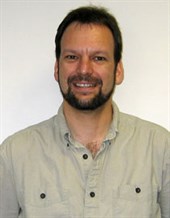 Dr. Frank Shipman, professor in the Department of Computer Science and Engineering at Texas A&M University, has been selected as a 2015 Texas A&M Engineering Experiment Station (TEES) Center Fellow. This award recognizes outstanding individual initiative and performance in support of the TEES mission of research, workforce development, technology development and transfer, and international outreach and collaboration.
Dr. Frank Shipman, professor in the Department of Computer Science and Engineering at Texas A&M University, has been selected as a 2015 Texas A&M Engineering Experiment Station (TEES) Center Fellow. This award recognizes outstanding individual initiative and performance in support of the TEES mission of research, workforce development, technology development and transfer, and international outreach and collaboration.
This is the first time the TEES Center Fellow has been presented and Shipman was one of only two professors honored with this award.
Shipman is the associate director of the Center for the Study of Digital Libraries (CSDL). The CSDL partners with other TEES and Texas A&M laboratories and centers on “big data” projects. Shipman’s research group has developed a range of software environments supporting access to and analysis of a wide range of content types, including texts, image, audio, video, and scientific and sensor data.
Shipman’s current research projects include the design and evaluation of an environment for heterogeneous data analysis, games motivating data science skills and digital libraries for sign language content. Additionally, Shipman is engaged in long-term external collaborations investigating the ownership and reuse of social media content and the design of tools for creating and consuming interactive video.
He received his bachelor's degree in electrical engineering from Rice University and master’s and Ph.D. in computer science from the University of Colorado. Shipman’s research has resulted in more than 170 publications, including more than 80 in prestigious journals and top-tier conferences. He has won the ACM Doug Engelbart award for best paper at Hypertext 1999, the ACM UIST Best Student Paper award in 2002 (with his student), and the ACM WebSci 2013 best paper award, and has had six other papers nominated for best paper awards at top-level ACM and IEEE conferences.
He is currently teaching a graduate course in computer-human interaction and a undergraduate/graduate course on computers and new media. He is also developing techniques to improve access to sign language video, developing tools and services for the Ensemble Computing Portal, exploring use of visual expression in the Visual Knowledge Builder 3.0 and its offshoots and also designing new interfaces for multimedia with FX Palo Alto Laboratory.